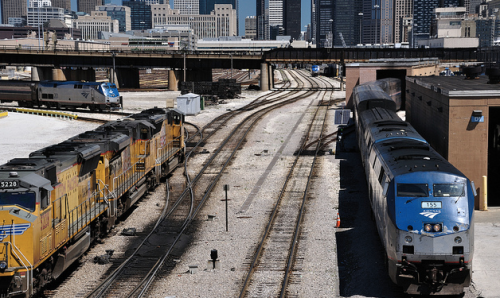Passenger trains in Europe and Asia are isolated from freight trains and even vehicular traffic. But in the United States, the trains we ride must share the road with heavy freight trains, semi trucks, busses and pedestrians. Sometimes we share space with the locals who use the right of way as their home or as their playground. This has become a way of life for your American railroad worker and train traveler.
In the wake of the Amtrak derailment yesterday in Philadelphia, the discussion has turned to the Locomotive Engineer, who for some reason allowed his train to operate at 56 mph OVER the legal track speed. In due time, we will hopefully learn why this happened. I have sympathy for my fellow colleague and condolences to all persons affected by the tragic accident. And that’s exactly what this was; an accident. A preventable accident.
Human error is an inevitable factor that can lead to mishaps in any industry. The railroad is certainly no exception. Fatigue, distraction or just poor judgment are common themes. Safety systems can help prevent these errors but only if they are working as intended.
A “train control system” is designed to alert the engineer of changing conditions ahead. Required speed reductions for track curvature, bridges, steep grades and signals trigger alarms and flashing lights in the cab. PTC would go one step further and actually override the engineer by applying the train brakes if no action is taken by the “point of no return”. This is where the problems with PTC begin to unfold.
PTC relies on GPS based tracking and accurate train manifest information to accurately display the size and location of a train. Also, up-to-the-minute conditions of the route to be traveled must be uploaded into the software. So far so good. But here’s where it gets complicated:
Every train has its own personality. Some have more power, some have better brakes. Also, every mile of track has its own dynamics with undulation, grade and curvature. These factors all contribute to how an engineer runs their train. In order for PTC to work as intended, the system must be able to recognize all these factors so as not to unintentionally disrupt the operation of the railroad. It must be able to think like an engineer. A “point of no return” for one train could be a mile closer to a curve for another. If trains are delayed unnecessarily, you’ll have pissed off passengers and pissed off freight customers. In the end, every railroad is in the business of moving trains. Before this new technology is introduced, each railroad has the right to ensure their train movements will not be impacted negatively.
A passenger train in the US typically travels over multiple railroads to reach its destination. Each of these railroads have their own rules and their own signals. A yellow signal on one railroad means 40 mph, on another it’s 30 mph, and another its 60 mph! There is a general code of rules that many railroads follow, but each is allowed their own modifications, additions or omissions. PTC must be able to swiftly transition from one set of rules to another, all at track speed! Many operating crews of passenger trains already juggle these rules and signals differences as part of their daily workload. These issues have resulted in accidents also, which is another topic for another blog post.
So is Positive Train Control the answer? Obviously, a properly functioning PTC system would have prevented last night’s accident and several others in recent memory. So it’s hard not to buy into the idea. But maybe the real question lies in the human error. What can be done to prevent worker fatigue? What can be done to avoid distraction? to avoid confusion? How can we help our railroad workers stay focused and make fewer mistakes. Technology is definitely part of the answer and so is PTC. But there are many other issues worth talking about.
